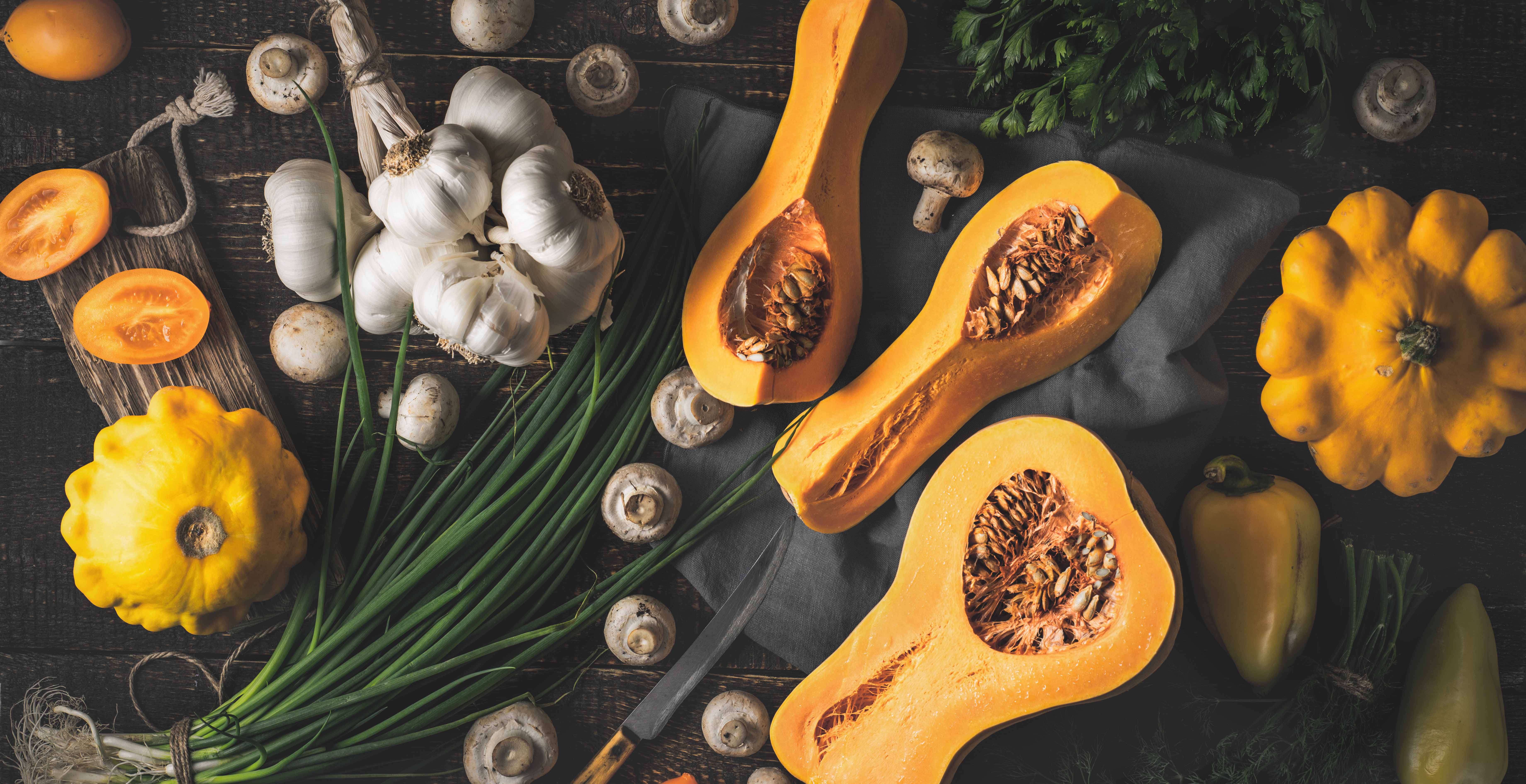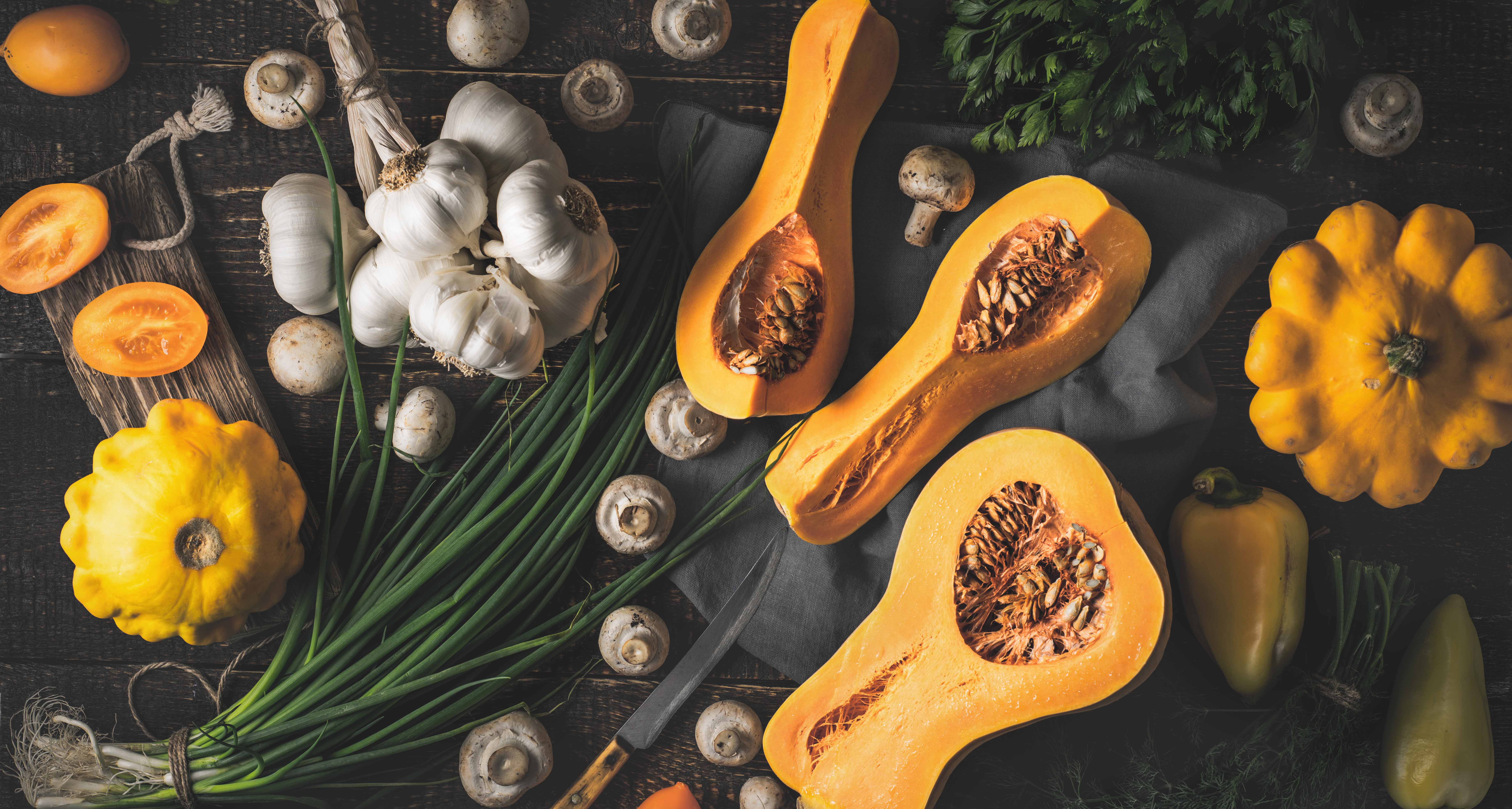Winter Squash


It’s hard not to get excited about winter squash as soon as they make their yearly appearance in the grocery store. Although winter squash is now largely available year-round, there’s something distinctive about preparing and eating squash as the autumn air turns colder and the daylight begins to fade.
Winter squash 101
Winter squash is a member of the gourd family Cucurbita and is actually a fruit, not a vegetable, because the seeds are self-contained in the squash. Despite its name, winter squash is actually grown in the summer and “winter” refers to the fact that it can be stored all winter long. Winter squash is indigenous to the Americas and has been cultivated for thousands of years and in fact, scientists recently discovered domesticated squash seeds in Mexico and Peru from 10,000 years ago. Winter squash is now grown worldwide and has found a place in various cuisines ranging from Indian to Italian to Japanese.
Choosing and storing winter squash
Selecting winter squash is a simple task when you follow a couple easy-to-remember guidelines. Look for winter squash that has a blemish-free matte surface and avoid any winter squash that has a shiny exterior, a shiny surface can often mean the squash was picked too early. Ripe winter squash will feel heavier than they look and will sound hollow if you give them a tap. Store winter squash in a cool, dry area away from direct sunlight, many types of winter squash can be stored for six months or even longer.
Preparing winter squash
Winter squash can be somewhat intimidating to prepare because of its tough exterior. Luckily there are a few tips and tricks to make this process easier. Wash and dry the outside of the winter squash using mild soapy water, if the outside is unclean your knife will drag bacteria through the squash as you cut it. Make sure to use a very sharp knife when dismantling winter squash, this will reduce the risk of accidents and make the process mush easier. Cut large slits into the winter squash making sure to fully pierce through the skin. Microwave the squash for 3-5 minutes and allow to sit for another 2-3 minutes before cutting, the winter squash will be considerably softer and easier to work with at this point. The winter squash is now ready to be roasted, pureed or steamed depending on the recipe.
Types of winter squash
Butternut squash
One of the most popular winter squash in Canada, butternut squash is instantly recognizable by its round bottom and thin neck. Very sweet and with creamy flesh once it’s cooked, butternut squash is a favourite amongst home cooks because of its low seed count and versatility. Use butternut squash for soups, as a pizza topping or in baking.
Acorn squash
Acorn squash is relatively easy to prepare compared to most other winter squash because of its thin edible skin and softer flesh. Acorn squash has a subtle sweet flavour and is delicious when halved and roasted with brown sugar and a small amount of roasted butter. Acorn squash can also be thinly sliced and added to grain salads or stir-fries.
Kabocha squash
Kabocha squash, also known as Japanese pumpkin, is a relative newcomer to farmers markets and well-stocked grocery stores in Canada. Kabocha squash looks like a small dark green pumpkin and is one of the sweetest winter squash varietals. Its texture becomes very fluffy once cooked and it can be used in place of sweet potatoes or pumpkins in pie or whipped into both sweet and savoury puddings.
